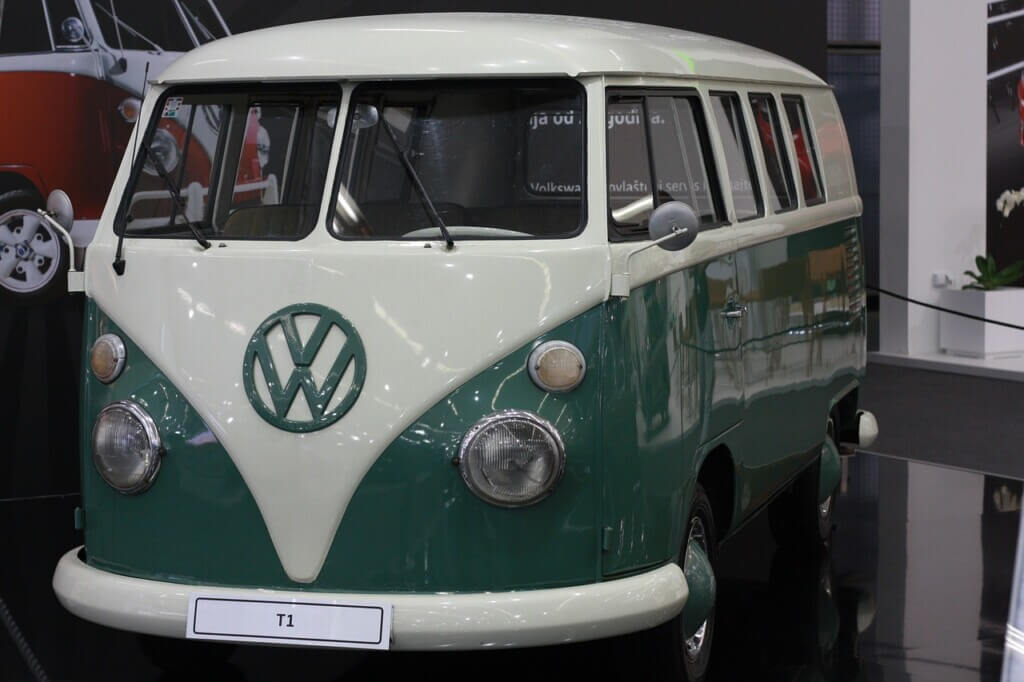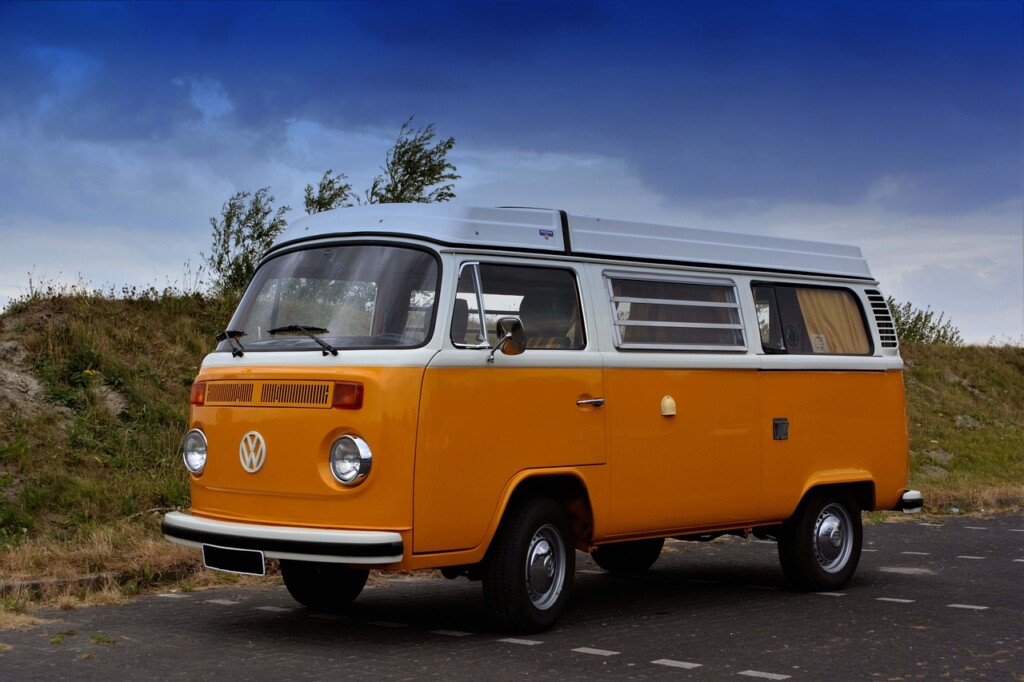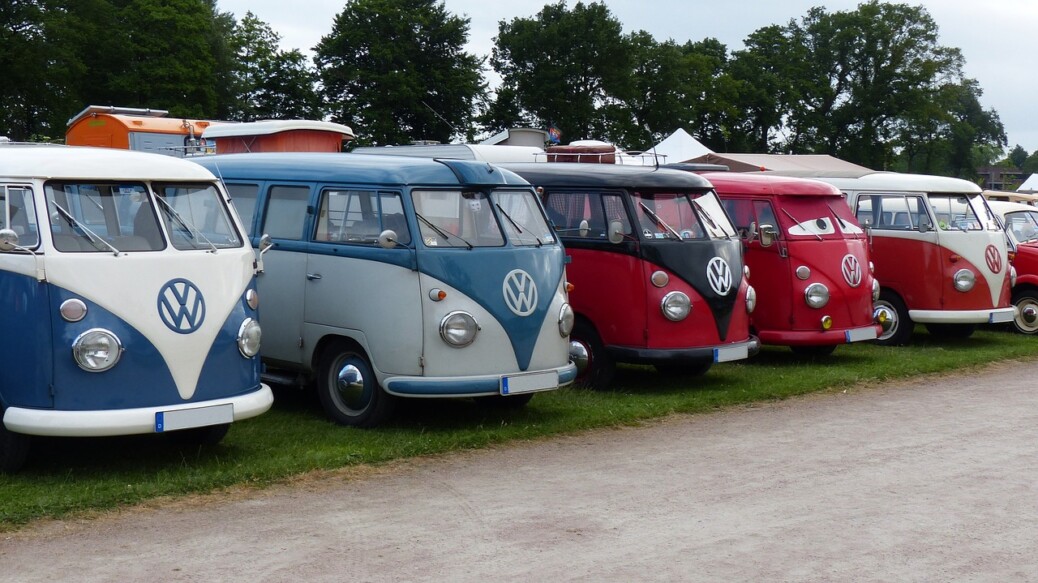Today, the VW Bus takes on many shapes and sizes. Let’s take a look down memory lane and see how the design of the most famous vehicle has changed through the generations.
How the VW Bus was invented
When the first VW Bus generation went into production in 1950, no one at Volkswagen knew that it was a world icon in the making. This humble yet unique vehicle captured the hearts and passions of people all around the world.
The T1 would become the face of Woodstock, be used on album covers, be featured in films, and was the first “mobile home” for laid back travelers. It later inspired the creation of online communities that share a love for these classic vehicles. The Buslifers Network is one of these communities.
The idea of the VW Bus was invented by Ben Pon, a Dutch businessman, who wanted a functional vehicle to haul cargo. He created the VW Bus based on inspiration from the successful Beetle, also by Volkswagen. Believe it or not, but it started out as a simple sketch on a napkin! It soon became a world phenomenon.



The T1 VW Bus
The first VW Bus generation was nicknamed “The Splitty” for its split front windshield. It can hold up to nine passengers with only 25 horsepower. The top speed is capped at 59 mph. It was originally built for curvy, narrow German roads where speed wasn’t a problem. Only when it was exported, was it clear just how slow the Splitty actually was.
The T1 VW Bus didn’t get exported until the mid-1950s. When it did the success skyrocketed! It was embraced by travelers and became the icon of the American counterculture movement in the 1960s. It was nicknamed the “hippie van” in the U.S. and was used to embrace peace and love in anti-war rallies. You can read all about this in our article, VWs & Vagabonds: A Love Story.
VW Buses were affordable, easy to fix and large enough to live in. Life on the road was a peaceful rebellion, a young person’s dream at that time.
The engine is set in the back of the bus which makes for a magical view sitting in the front seats, it feels as if you’re part of the scenery. The production of the VW Bus started in Mexico and Brazil as well in 1950’s.



The T2 VW Bus
The first evolution happened in 1967. The new design was nicknamed “The Bay”. The split windshield was removed and there were some upgrades in the engine and its electronics. It also had a bigger body that could carry more.
This was followed by “The Bay Camper Bus” shortly after, which was very similar but with a different window design. It was during this time that it really took off as a mobile home or camper for travelers.
This model also is what served as an inspiration for some other companies to finally create some competition, none of which took off like the VW Bus.
Brazil was the last country to continue producing this VW Bus until it sadly came to an end in 2013 when they couldn’t keep up with the safety standards that are required.
The T3, T4, and T5 generations
Following were the models T3, T4, and T5. The T3 was created in 1979. It was larger and heavier and took away the round edges which were replaced with square corners.
The T4 moved the engine to the front of the bus in 1990 and the T5 followed in 2003. None of these models had quite the effect of “The Splitty” or “The Bay”.
The latest VW Bus
The latest VW Bus generation is the T6. It has an entire dashboard makeover and some tweaks to the rear exterior. Other than these changes it was just a step up from the T5 model.
These latest generations are still not as beloved as the classic T1 and T2 models. Don’t worry though! Last year VW officially announced that a VW Bus is coming back in 2022 with look similar to its predecessors.
The bus of the future
The new bus has a similar look to the T1 and T2 models with a modern and sleek take. They want to make it “the iconic car of the electric age”. It’s going to be a fully electric microbus that will create a whole new generation of VW Bus fans. The new bus will be complete with tons of cargo space, a front trunk, and a bay windshield.
This iconic bus came to represent freedom. They are seen all over the world and still in use almost 70 years since being invented. A strong following of people continue to spend their time camping, exploring and living in them.
Traveling becomes an entirely different experience when you’re sitting behind the split or bay windshield. You still see it today on the side of beaches with surfboards thrown on top or set up for camp with chairs and a bonfire already going.
It started out as a workhorse and ended up as a symbol of nonconformity for open-minded wanderers everywhere. We all owe a lot to this simple, incredible bus. With a face that tells a million stories, it represents something different for every person who has ridden in one.
What does the VW Bus mean to you? What is your favorite generation? Let us know in the comments!



[…] zero emissions and runs like a dream. Want to know more about the different models of VW Bus? Check out this article.Have you ever seen a T1 Samba converted for Buslife? If you have, let us know in the […]